

JW PORTER

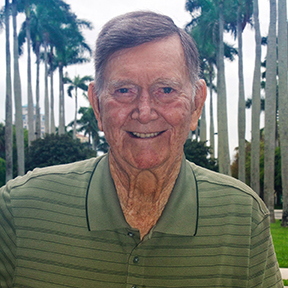

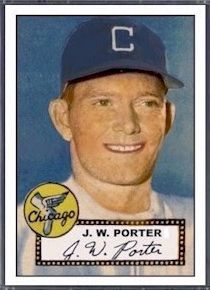

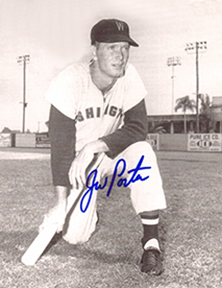

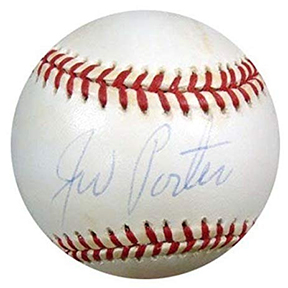
I was born in Bugscuffle, Oklahoma but we moved to Oakland in November 1941, one month before the attack on Pearl Harbour, in winter when I was nine years old.
In Oakland I was always throwing things, rocks, baseballs made out of rags but never played a real game of baseball. I saw the old ballpark during the off-season and couldn’t wait until Opening Day. Oakland had a team in the Pacific Coast League which included, Seattle Rainiers, Portland Beavers, Sacramento Solons, Los Angeles Angels, San Diego Padres, Oakland Oaks, and San Francisco Seals. In the spring on 1942 I walked 10 blocks to school, walking by the ballpark. School let out at 3:00 and as I walked past the ballpark heard the screams of 10,000 people inside. At that time of day the game was almost over and the tickets sales were finished. A ballpark worker saw me staring through an opening. “ Hey kid, the game is going into the 8th inning. Go on in. We are not selling tickets anymore.” So I went in and watched the last two innings and as my mother used to say, “I never left”. I was there for 13 years and practically lived there.My first job was picking up the cushions that people sitting out on the wooden bleachers rented to sit on. They would kick them under the seats when the game was over and I was paid one cent per cushion to gather them and lock them up in a room. So I did this for a couple of months and had about six different ways to make money, like shining shoes and doing various jobs for the players. They made good money even in those days so I was tipped very well.
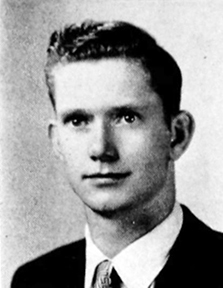
Then the Second World War had started and the visiting team’s clubhouse boy was Japanese, who was forced to live in a relocation camp in the U.S., so I became the visiting clubhouse guy. I got to know a lot of the great older players. Then the home team clubhouse boy went off to college so I did this until I graduated high school. If I wasn't playing ball myself at the ballpark, I shined shoes, worked in the clubhouse. I had some great roomies. Cleveland won the pennant in 1948 and had some really great players, such as Lou Boudreau, Larry Doby, Joe Gordon, Jim Hegan, Ken Keltner, Eddie Robinson and pitchers Gene Beardon, Bob Feller, Bob Lemon and Satchel Paige. I decided to play ball rather than go to college so signed for a big bonus and after I hit the big leagues I was in “ hog heaven”. As a kid and a new major leaguer I saw Joe DiMaggio in San Francisco who was a hero in the Pacific Coast League in the minor leagues when I was playing in Oakland. The American League was really strong in the 1940s and 1950s, with the Indians winning it all in 1948 and 1954, finishing second to the Yankees in 1951-1952-1953. My father was a dirt farmer from Oklahoma until we moved to California and then worked in a shipyard.
Millions of people invaded California overnight where they were building ships, planes, and tract homes and we bought one of those homes that were all similar but better than the ratty place back in Oklahoma.
Millions of people invaded California overnight where they were building ships, planes, and tract homes and we bought one of those homes that were all similar but better than the ratty place back in Oklahoma.
The White Sox were a disappointment a lot of the time. They all thought like losers. In 1920 the Black Sox scandal surfaced and in 1951 they finished 7th or 8th in the league. Judge Landis threw out 8 of the White Sox best players.Charles Comiskey was tight with his money. He made a living but didn’t get rich. The team was bad for so long.
Starting with me, he died and the new ownership took over and and immediately began spending. The White Sox gave me a big bonus. They had a pretty good team in 1959 and were in the pennant race but by then I had been traded to the Browns. The White Sox were used to losing in the majors and I did not understand their attitude. The players were always saying how great the Yankees were doing. I was used to being on a team in a league that won everything. I enjoyed the Browns. The owner, Bill Veeck, was doing outlandish things like contracting midgets, installing an exploding scoreboard and was working hard toward building a wining team. However they finished last. They were getting better but then Baltimore acquired the team in 1953 and started trading almost immediately. Then they wanted to move the team to Los Angeles without Bill Veeck but Los Angeles wanted new ownership.They traded all of us for money and built up a team almost overnight.
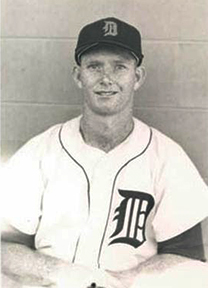

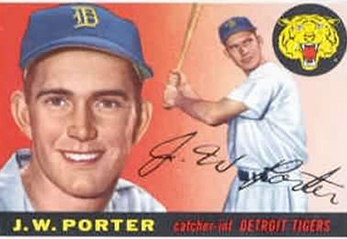
I enjoyed the Tigers having been traded to Detroit for the 1955 season. They then traded to improve the team and Detroit gave one of their new catchers as big a bonus as I received when I was with the White Sox so I sat behind him and played several positions. I was not a good part time player. In the minors I had played with and against some great players and was always on the All-Star team. I played with Frank Howard while I was a catcher.
No one wanted to play for the Indians as they played in an old, much too large football stadium that had been built because they were hoping to get the 1932 Olympics. They built a huge 100,000 seat stadium but then the Olympics went to Los Angeles. Playing baseball in a football stadium has been tried several times and it just doesn’t work. The center field is a mile away and sight lines are short. There were two other catchers on the team but I was good at catching the knuckleballer, Steve Ridzik. At that time they might bring in a relief pitcher in the second inning and he might finish the game, however if it was Stever Ridzik he usually pitched maybe one or two innings. From the Cleveland Indians I went to Washington in 1959 so I was about 25 or 26 at that time and surrounded by 20 year olds. Then to the St. Louis Cardinals that same season. By then I was so disappointed that I had not won a job over guys that I had played with in the minors. I was never used enough. So I told the Cardinals that I had to play every day and would rather play in the minor leagues. I wasn’t thinking about pension plans or that kind of thing. They wanted me to go to Rochester and at that time I lived on the West Coast. So I was going to quit. 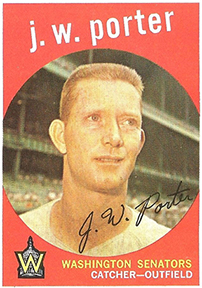
At that time the Braves were offering me a coaching and managing position, if I did what I was told to do. I turned down a job in Japan, which I sometimes wish I had taken to accept a part time job as a player coach with the Braves which lasted two seasons.
Then I moved to the Expos organization as a non-playing manager in 1969 for their Bradenton Expos squad in the Gulf Coast League.Bradenton was the only team associated with an expansion team to win a pennant in their 1st year. I had three really good kids.
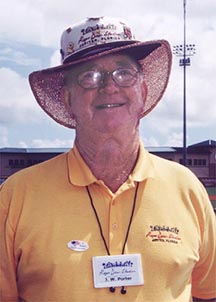
“I don’t have any complaints.”
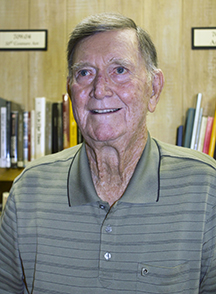
CANADIAN BASEBALL NEWS - 29 JANUARY 2018

